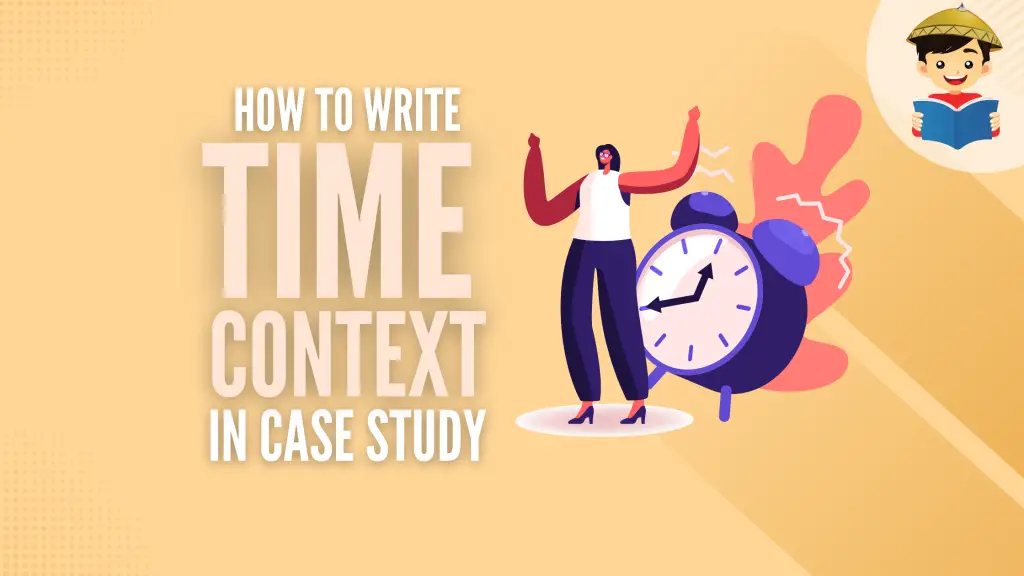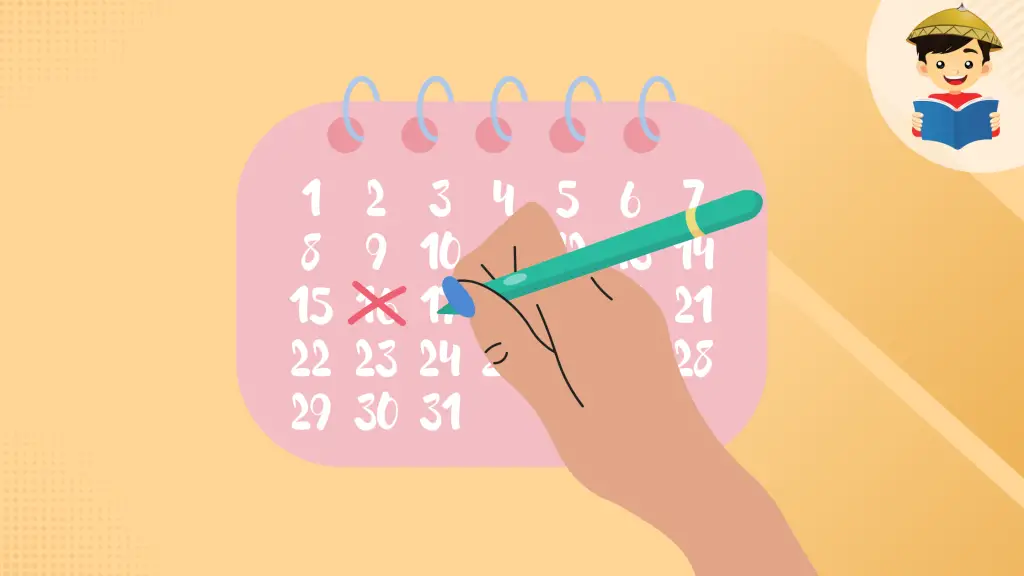How To Write Time Context in Case Study (With Examples)

An impressive case study clearly describes the important facts and details about the issue it analyzes. One of these details that must be considered is the time period when this issue happened. This is specified in the portion of the case study called the Time Context, or “Konteksto ng Panahon” in Filipino.
Writing the Time Context of the case study requires careful analysis and decision-making, making it quite challenging for some students. For this reason, this article provides a comprehensive guide on how to write this portion and some examples that you may use as a reference.
Table of Contents
- What Is Time Context in a Case Study?
- Why Should I Write the Time Context of My Case Study?
- How To Write Time Context in a Case Study
- Examples of Time Context in a Case Study
- Tips and Warnings
What Is Time Context in a Case Study?
The Time Context, which is located at the beginning of the case study, tells the reader the time during which the problem of the study occurred. In other words, it indicates the “scope” of your analysis in terms of the time period.
This is analogous to the “setting” of a short story. The setting of a story tells you when it happened. If you imagine your case study as a short story, the time context is its “setting.”
Why Should I Write the Time Context of My Case Study?
This portion allows your readers to determine exactly the problem you are referring to by indicating a vital detail: the time when it happened.
Suppose that your study’s problem revolves around the decline in annual sales of a certain firm. If the firm experienced a decline in sales in different periods, the readers will have a hard time figuring out which one you’re referring to (e.g., are you referring to the year the sales declined in 2008, 2010, or 2020?) By indicating the time context, this ambiguity is resolved.
Furthermore, this portion makes your analysis more focused by indicating the specific period where your analysis is bounded. For instance, If your time context is only the first quarter of 2020, then you are not expected to analyze the events that happened or factors that emerged during the periods beyond or even before your selected time context.
How To Write Time Context in a Case Study
Now that you have an idea of the time context, it’s time to write it. Follow the steps below to learn how to write one.
1. Identify When the Problem of Your Case Study Arose

Research the history of your case study’s subject (i.e., the firm/organization) to help you identify the time when its problem arose. This “time” can be a year (e.g., 2020), a month (December 2020), a quarter (Q2 of 2020), or a day (December 1, 2020).
2. Specify the Exact Period That You Are Going To Analyze

After you figure out the time when the problem of the firm or organization emerged, think about how long the problem continued to persist. The period from the date the problem arose to the date it was resolved is the time context of your study.
Suppose the firm’s sales started to decline during the first quarter of 2008. If this problem was resolved eventually in the last quarter of 2008, then the time context of your case study is the year 2008.
If the problem of your case study is happening in the present, then the time context of your case study is the current year. It implies that your analysis will revolve around the current year’s events.
3. Explain Your Indicated Time Frame

Once you have figured out your case study’s time context, you may now indicate it in your manuscript. You may add supporting details by explaining what happened during that period.
Most case studies explicitly indicate the time period in this portion without including any explanation. Although the justification for your selected time context is optional, it is advisable to show one to make this portion more comprehensive.
Examples of Time Context in a Case Study
Example 1
Case Study Topic: An analysis of how Jollibee Foods Corporation (JFC) handled massive public criticism during the “Toweljoy” incident wherein one of their customers received an improperly prepared fried chicken that violated the Food Safety Act.
Time Context: The incident happened in June 2019. JFC responded by temporarily closing for three days the branch where the incident occurred and releasing an official statement acknowledging the issue. The incident became a trending topic days after it happened.
The example above provides a clear timeframe that indicates the coverage of the analysis, which is an event that took place in June 2019. Furthermore, it elaborates the indicated time context by briefly describing what happened during that period.
Example 2
Case Study Topic: Xelon Pastries struggles to accommodate a large volume of orders due to the holiday season. The management believes that the current number of staff and supplies are insufficient to meet the increase in demand. Failure to meet the overwhelming customer demand might lead to a loss of profit opportunities.
Time Context: Xelon Pastries has to accommodate a notable 15% increase in daily orders in December 2015. It is expected that the volume of orders will further increase as the Christmas season approaches.
Note how the example above provides a specific date during which the business faced the problem (i.e., December 2015). This implies that the analysis will be limited only to the said time period. In other words, the large volume of orders during other “holiday seasons” (e.g., December 2014) and the firm’s condition during the said periods will not be considered in the analysis.
Example 3
Case Study Topic: Netflix Inc. is struggling to keep up with the increasing market competition after it lost an estimated 200,000 subscribers and experienced a decrease in its market value with a decline in shares of 35%.
Time Context: The first quarter of 2022 is a negative turning point for Netflix Inc. as it struggles with a declining subscriber level due to a variety of reasons, including an increase in “pay-to-watch” platforms and the company’s exit from the Russian market because of the Ukrainian-Russian conflict.
Tips and Warnings
1. Ensure the Time Context is clear and not too broad
For instance, indicating that your Case Study’s Time Context is “the present year” is too broad since readers have no clue whether you’re referring to the year they are reading your case study or the year when it was published. So, it is better to make it more specific such as “the year 2017”. Furthermore, if you think the problem only occurred in a particular period of that year, make it more specific by indicating the quarter or the month (e.g., Q1 of 2017, August 2017).
2. Creating a timeline is optional
You may also present your case study’s Time Context using a timeline. A timeline lists important events throughout the problem’s duration. It’s a sequence of events that happened between the date the problem emerged up to the date it was solved (or present date).
To make a timeline, state the date (or span of periods) when a specific event happened. This event must be relevant to your case study’s problem. Afterward, provide a brief description of what happened during that period. Do this approach for every “sub-events” of your timeline.
Note that using a timeline is optional but you can use it to make this part more detailed.
Here is an example of a case study that presents its Time Context using a timeline:
Case Study Topic: Despite Netflix being the world’s leading streaming platform, it experienced slow revenue growth in early 2022 because of the following:
- The increasing saturation of the “pay-for-view” market
- Ukrainian-Russian conflict
- Stagnant subscriber growth
- Easing pandemic restrictions
Time Context of the Case Study:
January 2022 – Investors are cautious of the slow growth of Netflix Inc. leading to a tail-off of about $45 billion in market value and 20% in shares.
January – March 2022 – Netflix Inc. lost an estimated 200,000 subscribers and a decline of 6.4% in its Quarter I net profit.
March 06 – 07, 2022 – Netflix Inc. halted its operations in Russia. This is a response to the worsening crisis due to the Ukrainian-Russian conflict. This leads to a loss of about 700,000 paid subscribers in the region.
April 19, 2022 – Netflix Inc. released a note to its shareholders. It states some factors that contribute to its stagnant revenue growth. These include the following:
- 100 million unpaid subscribers that enjoy shared household accounts
- Increasing market competition
- Macroeconomic factors including slow economic growth and rising inflation.
April – May 2022 – Netflix’s competitors HBO (and HBO Max) recorded an increase of 3 million subscribers. Meanwhile, Disney Plus garnered more than 7.9 million subscribers. These happened shortly after Netflix lost a significant number of subscribers.
May 17, 2022 – 150 US-based Netflix employees were laid off as a cost-cutting solution to the company’s decline in revenues.
Written by Jewel Kyle Fabula
Jewel Kyle Fabula
Jewel Kyle Fabula graduated Cum Laude with a degree of Bachelor of Science in Economics from the University of the Philippines Diliman. He is also a nominee for the 2023 Gerardo Sicat Award for Best Undergraduate Thesis in Economics. He is currently a freelance content writer with writing experience related to technology, artificial intelligence, ergonomic products, and education. Kyle loves cats, mathematics, playing video games, and listening to music.
Copyright Notice
All materials contained on this site are protected by the Republic of the Philippines copyright law and may not be reproduced, distributed, transmitted, displayed, published, or broadcast without the prior written permission of filipiknow.net or in the case of third party materials, the owner of that content. You may not alter or remove any trademark, copyright, or other notice from copies of the content. Be warned that we have already reported and helped terminate several websites and YouTube channels for blatantly stealing our content. If you wish to use filipiknow.net content for commercial purposes, such as for content syndication, etc., please contact us at legal(at)filipiknow(dot)net
